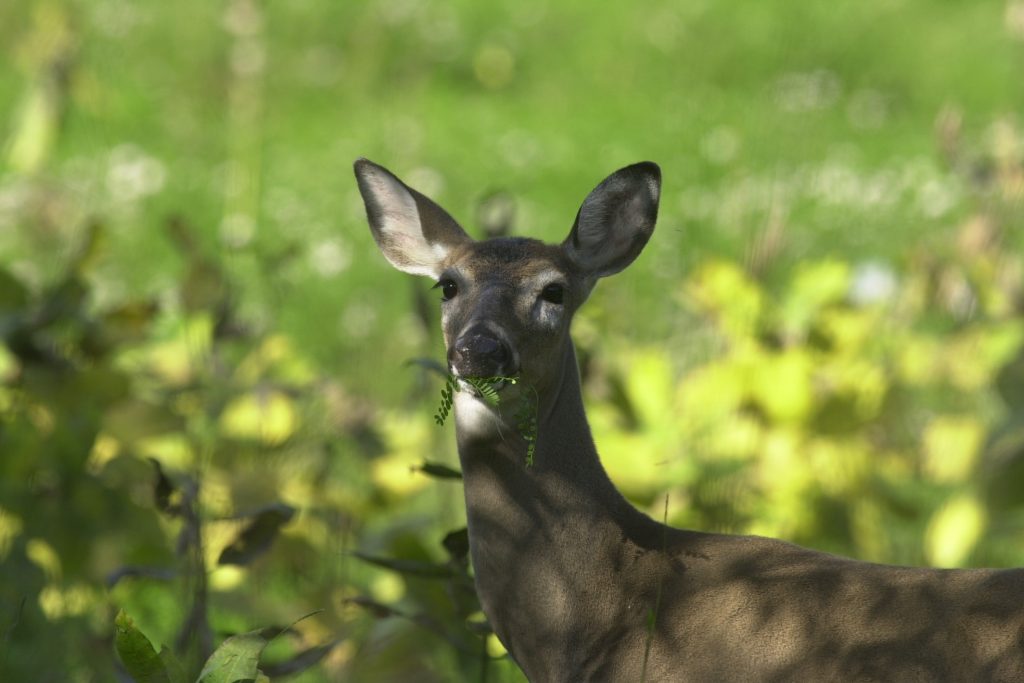White-tailed deer are classified as ruminants. Ruminants have the ability to extract nutrients from plant-based diets. Anatomy and observation certainly bear this out.
The digestive system of the white-tailed deer consists of structures and organs designed to physically, biologically, and chemically reduce forage to a form from which nutrients can be absorbed.
Ok, here comes your anatomy and physiology lesson for the day.
The main components of the white-tail diet are structural and nonstructural carbohydrates with the majority being structural carbohydrates. What are structural carbohydrates?
Answer: Plant cell walls… you’re wondering why I just didn’t say that in the first place. I told you this was a lesson.
No vertebrate species produce enzymes capable of digesting structural carbohydrates… I mean… plant cell walls. So what’s a deer to do?
Without getting too bogged down in the details (I know this is summer vacation), deer are equipped with a large 4-chambered stomach. With the help of microorganisms (40 billion bacteria and 454,000 protozoa, to be exact), plant material is broken down into usable nutritional components in about 48 hours.
Fun Fact: Deer produce about 2 gallons of saliva a day!

Photo credits: PGC
Deer may consume over 100 different plant species in a year. But that’s not what this post is about.
Deer are not the innocent vegans they would have us believe. There have been numerous reports of deer eating things other than plants as far back as 1932 when a doe was observed actively pursuing, catching, and eating suckers in Cecil Lake, Ontario. This was surely a chance observation of perhaps an anomaly. Or was it?
With the advent of game cameras, we get to “observe” a lot more than we used to. And guess what? Deer have been routinely caught red-hooved. Savannah sparrows, grasshopper sparrows, clay-colored sparrows, red-winged blackbirds, and even bobwhite quail are no match for the quick, sharp tongue of the whitetail. They have even been caught on tape!
Video credit: Lind Ford Looper via link to YouTube
So the next time you see a doe peacefully grazing in a meadow she may not be munching on clover. After all, a free meal is a free meal even if it wiggles a little.
-Jeannine Fleegle, biologist
PGC Deer and Elk Section
If you would like to receive email alerts of new blog posts, subscribe here.
And Follow us on Twitter @WTDresearch
